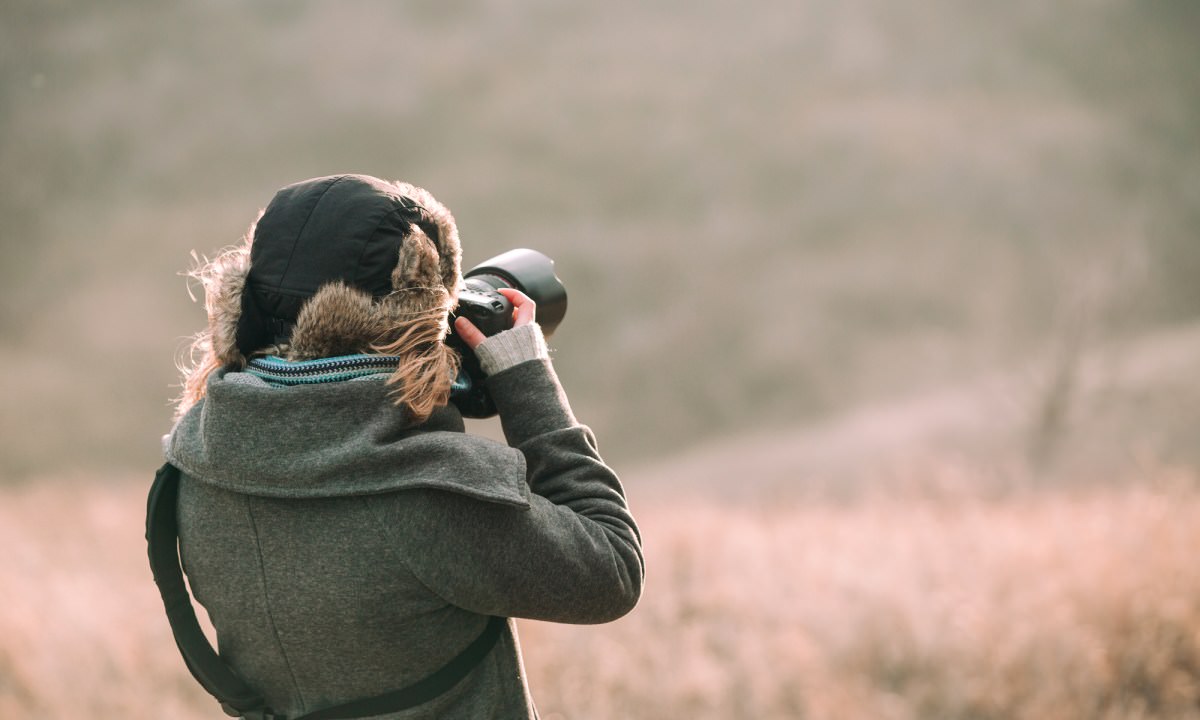When the snow’s coming down hard, don’t put your camera away. Winter is a great canvas for photography; but a surprisingly difficult one.
Here are 10 things to make your images of the cold stand out like fire.
Have a Story
First and foremost, all photographs are stories. As Ansel Adams, said, nothing’s as frustrating as a sharp image of a fuzzy concept. What is so exciting? The thrill of skiing down a valley of fresh untracked powder? The warmth of that cup of hot cocoa in the lodge? The frustration of having to shovel the car out in the morning? Kids having a blast sledding? Pick a story and eliminate anything else from the image that doesn’t contribute to that story.
Be a Participant
Winter is not a spectator sport. To make good images of people skiing, snowshoeing, sledding, snow-fort building, you’ll have to be out there with them. That means getting close, carry your camera with you, and having fun while you make images.
Don’t Get Snowed
Even the best cameras—smartphone cameras to fancy DSLRs—all have one problem when operating in automatic mode: they want to make things “neutral" in tone. It’s not a flaw, it’s how they’re programmed to make most exposures come out most of the time. The result is that without you overriding the controls, they’ll make snow turn gray. Learn how to override your camera or phone’s controls to add light so you get soft white snow instead of gray. On cameras, it’s the “exposure compensation" button common on even the most basic point and shoots. Phone camera options are limited: check the settings.
Use the Giant Reflector
Normally, shooting in the middle of the day in the outdoors is hard: you get hard black shadows, often on people’s faces, and hats with brims make them even worse. Winter is a welcome break: when there’s snow on the ground, it makes a great reflector, illuminating people’s faces and other shadow detail. Don’t just always put the sun over your shoulder—experiment with side and backlight and let the reflector do its work.
Polarize
The single best tool for winter photography is a circular polarizing filter. It’s a two-ring filter that attaches to the front of the lens, and you can rotate the ring to adjust the effect. It darkens the sky, increases contrast, and eliminates glare. The best effects are at 90 degrees to the sun. Experiment, but definitely use when shooting toward the sun.

Sunstar
The sunstar is a powerful image in summer or winter—it reminds us about the change in the seasons, and adds intensity to otherwise clear and uninteresting skies. Its radial symmetry is inherently pleasing to the human eye. How to do it? It’s surprisingly easy. Shoot at a very wide angle, put the sun near the center portion of the frame, and stop down your aperture (the A setting) as low as you can go. This may mean you need a tripod, since it means you’ll have to leave the shutter open longer.
Manage Action
If you’re focusing on anything moving—sledding, skiing, ice-skating, whatever it might be—you’re shooting action. Action involves three decisions. The first is deciding how close you want to get: zooming in to make the story about the participant or shooting wider to show the action in a larger setting. The second is how you want to show movement. You can use a pan blur to keep the subject sharp while blurring the motion or you can freeze it to make the motion stop. Either can work, but they convey very different visual energy.
Making the first decision is all about where you stand and whether you zoom in or out: the second is require mastering your camera’s settings. The third is about contrast. Contrast is innately linked to stress in the human mind: dark shadows create stress, and stress is innately linked to diving down a black diamond run. In this image of kayaking, deep black shadows create a sense of drama. Less contrast would make the image more mundane. Use your shadows well.
Show Misery
Not every image needs to be pretty. In this image of a mud-spattered cyclocross racer, it’s pretty clear that “pure fun" is not what he’s feeling at the moment. The same is true of winter: make images of the cold mornings, trying to warm icy fingers, and all the other things that can make winter wicked. They’re part of the story too.
Manage Your Batteries
And now for some basic camera tips. Batteries don’t last long in cold. Keep a couple of spares in the inside pockets of your coat so you can swap warm ones out when you need to.
Cold to Warm
Cameras, unlike batteries, generally do fine with freezing temperatures. They don’t do well when you bring them from cold environments into warm ones, though: the condensation will hit them hard. Before you step into the lodge, put your camera in a Ziploc bag with a packtowel or desiccant. Get as much air out as you can, and then go inside. After about 10 minutes, take the camera out of the bag.